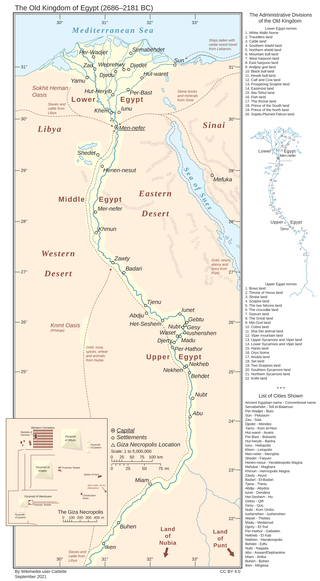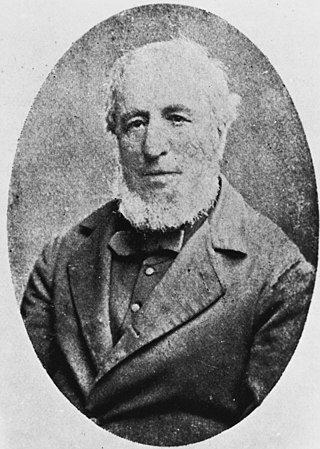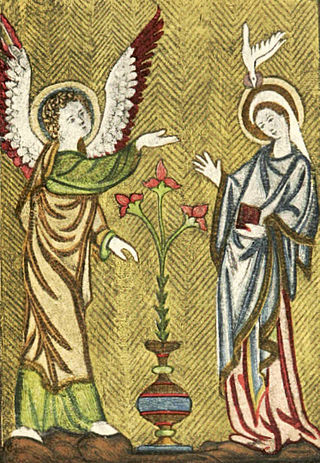Related Research Articles

Iridium is a chemical element; it has symbol Ir and atomic number 77. A very hard, brittle, silvery-white transition metal of the platinum group, it is considered the second-densest naturally occurring metal with a density of 22.56 g/cm3 (0.815 lb/cu in) as defined by experimental X-ray crystallography. It is one of the most corrosion-resistant metals, even at temperatures as high as 2,000 °C (3,630 °F). However, corrosion-resistance is not quantifiable in absolute terms: although only certain molten salts and halogens are corrosive to solid iridium, finely divided iridium dust is much more reactive and can be flammable, whereas gold dust is not flammable but can be attacked by substances that iridium resists, such as aqua regia.

Platinum is a chemical element; it has symbol Pt and atomic number 78. It is a dense, malleable, ductile, highly unreactive, precious, silverish-white transition metal. Its name originates from Spanish platina, a diminutive of plata "silver".

In ancient Egyptian history, the Old Kingdom is the period spanning c. 2700–2200 BC. It is also known as the "Age of the Pyramids" or the "Age of the Pyramid Builders", as it encompasses the reigns of the great pyramid-builders of the Fourth Dynasty, such as King Sneferu, who perfected the art of pyramid-building, and the kings Khufu, Khafre and Menkaure, who constructed the pyramids at Giza. Egypt attained its first sustained peak of civilization during the Old Kingdom, the first of three so-called "Kingdom" periods, which mark the high points of civilization in the lower Nile Valley.

A necklace is an article of jewellery that is worn around the neck. Necklaces may have been one of the earliest types of adornment worn by humans. They often serve ceremonial, religious, magical, or funerary purposes and are also used as symbols of wealth and status, given that they are commonly made of precious metals and stones.

Group 10, numbered by current IUPAC style, is the group of chemical elements in the periodic table that consists of nickel (Ni), palladium (Pd), platinum (Pt), and darmstadtium (Ds). All are d-block transition metals. All known isotopes of darmstadtium are radioactive with short half-lives, and are not known to occur in nature; only minute quantities have been synthesized in laboratories.

Edward Davy was an English physician, scientist, and inventor who played a prominent role in the development of telegraphy, and invented an electric relay.

A bowl is a typically round dish or container generally used for preparing, serving, or consuming food. The interior of a bowl is characteristically shaped like a spherical cap, with the edges and the bottom forming a seamless curve. This makes bowls especially suited for holding liquids and loose food, as the contents of the bowl are naturally concentrated in its center by the force of gravity. The exterior of a bowl is most often round, but can be of any shape, including rectangular.

The Unicorn Tapestries or the Hunt of the Unicorn is a series of seven tapestries made in the South Netherlands around 1495–1505, and now in The Cloisters in New York. They were possibly designed in Paris and show a group of noblemen and hunters in pursuit of a unicorn through an idealised French landscape. The tapestries were woven in wool, metallic threads, and silk. The vibrant colours, still evident today, were produced from dye plants: weld (yellow), madder (red), and woad (blue).

The Coronet of Charles, Prince of Wales is a small crown that is part of the Honours of Wales. The gold coronet, with diamonds set in platinum, was made for and used by King Charles III at his investiture as Prince of Wales in 1969. Designed by the artist Louis Osman, the coronet was a gift from the Worshipful Company of Goldsmiths to the Prince's mother, Queen Elizabeth II. It has been described as modern but its form is traditional. The coronet is on permanent display in the Jewel House at the Tower of London.
Johnson Matthey plc is a British multinational speciality chemicals and sustainable technologies company headquartered in London, England. It is listed on the London Stock Exchange and is a constituent of the FTSE 250 Index.

France has a unique history of units of measurement due to its radical decision to invent and adopt the metric system after the French Revolution.

Barry der Menschenretter (1800–1814), also known as Barry, was a dog of a breed which was later called the St. Bernard that worked as a mountain rescue dog in Switzerland and Italy for the Great St Bernard Hospice. He predates the modern St. Bernard, and was lighter built than the modern breed. He has been described as the most famous St. Bernard, as he was credited with saving more than 40 lives during his lifetime, hence his byname Menschenretter meaning "people rescuer" in German.

Opus Anglicanum or English work is fine needlework of Medieval England done for ecclesiastical or secular use on clothing, hangings or other textiles, often using gold and silver threads on rich velvet or linen grounds. Such English embroidery was in great demand across Europe, particularly from the late 12th to mid-14th centuries and was a luxury product often used for diplomatic gifts.

Meskalamdug was an early Sumerian ruler of the First Dynasty of Ur in the 26th century BCE. He does not appear in the Sumerian King List, but is known from a royal cylinder seal found in the Royal Cemetery at Ur, a royal bead inscription found in Mari, both mentioning him as King, and possibly his tomb, grave PG 755 at the Royal Cemetery at Ur.

The mandore is a musical instrument, a small member of the lute family, teardrop shaped, with four to six courses of gut strings and pitched in the treble range. Considered a French instrument, with much of the surviving music coming from France, it was used across "Northern Europe" including Germany and Scotland. Although it went out of style, the French instrument has been revived for use in classical music. The instrument's most commonly played relatives today are members of the mandolin family and the bandurria.

Johnson Matthey Technology Review, known as Platinum Metals Review before 2014, is a quarterly, peer-reviewed scientific journal publishing reports on scientific research on the platinum group metals and related industrial developments.
Armand Jean François Séguin or Segouin was a French chemist and physiologist who discovered a faster and cheaper process for tanning leather. As a result, he became immensely rich through the supply of leather to Napoleon's armies. He was born on March 21, 1767, in Paris and died on January 23, 1835.
Thomas John Shillea, is an American artist, who specializes in painting and photography. He is known for using 19th century printing techniques. He began drawing at the age of two and throughout his childhood made thousands of photorealistic drawings. Shillea earned a BS in Art Education from Kutztown University. He then taught high school art and later earned an MFA degree at the Rochester Institute of Technology.
Jules Henri Debray was a French chemist.
Prentice Brothers Limited was an English fertiliser manufacturer founded in Stowmarket, Suffolk during the mid-1850s. The company produced a number of "chemical manure" products that used coprolites and rock phosphates among other ingredients.
References
- ↑ McDonald, Donald; B. Hunt, Leslie (1982). A History of Platinum and its Allied Metals. Johnson Matthey. p. 78. ISBN 0905118839.
- ↑ Le Corbeiller, Clare (1975). Platinum Metals Review . 19 (4): 154–155.
{{cite journal}}: Missing or empty|title=(help) - ↑ "Sugar bowl". The Metropolitan Museum of Art. Retrieved 2016-08-16.
- ↑ McDonald, Donald; B. Hunt, Leslie (1982). A History of Platinum and its Allied Metals. Johnson Matthey. p. 187. ISBN 0905118839.
- ↑ Quinn, Terry (2011). From Artefacts to Atoms. Oxford University Press. ISBN 9780195307863.